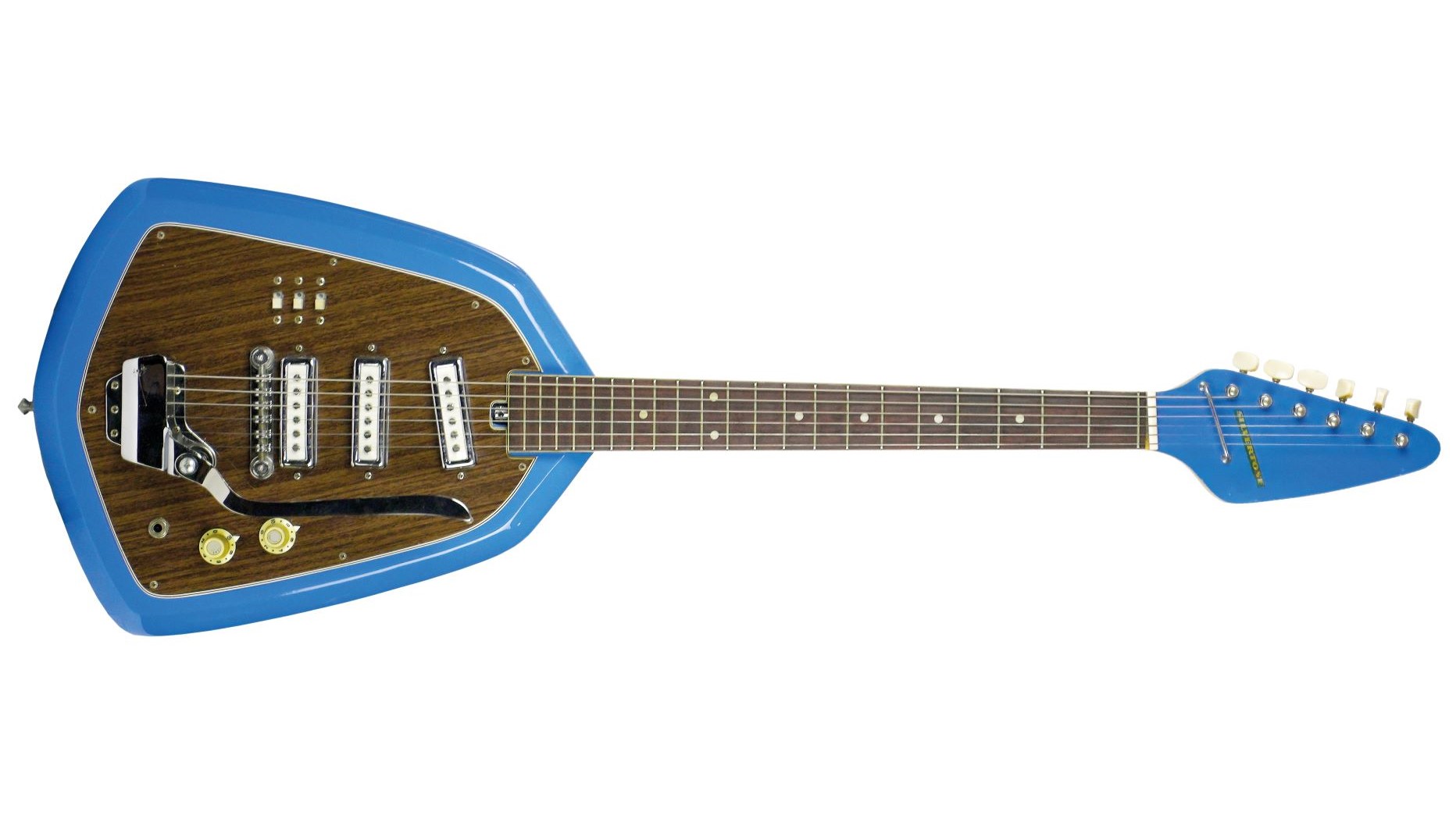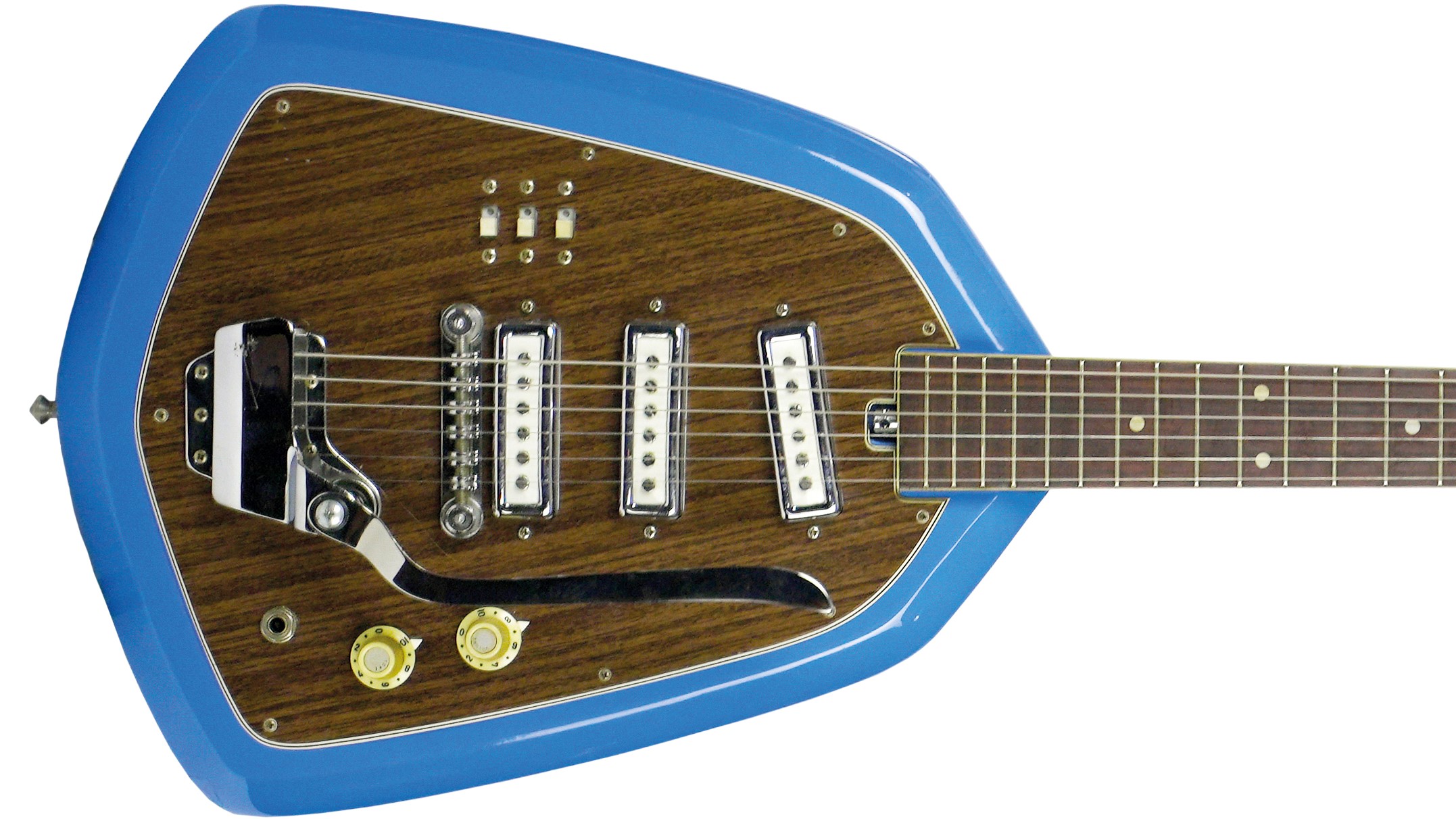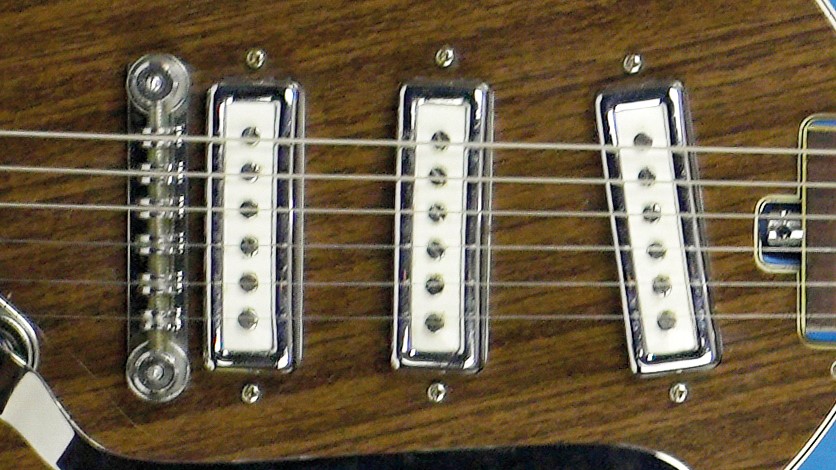It's Cheap, Nasty, and Sounds Terrific: the Silvertone/Teisco EV3T
Some 50 years later, Teisco guitars like this have found their way into respectability among not just collectors but also players and session musicians.

We’re still somewhat surprised by just how good some of these Teisco guitars can sound and play. Granted, the 1968 Silvertone/Teisco EV3T shown here was never intended to be a professional guitar, nor was it priced to be, with an MSRP of 50 bucks circa 1968.
This guitar comes from an important transition period in the Teisco story. According to Japanese guitar expert Frank Meyers, this Teisco with the Silvertone branding (the name that Sears put on its guitars) is not exactly a Teisco – it’s a Teisco made by Kawai.

Weirdo Factor
If the loud blue color and faux wood paneling pickguard aren’t odd enough, how about the shape of this beast? It’s like a cross between a Vox Phantom and a Teardrop, hence the model’s Crying Phantom nickname.
The late 1960s marked the end of the golden era spawned by the mid-’50s electric guitar boom. Designers were desperate for new designs that might sell a few more guitars. But other than its shape, this guitar is exactly like the Teisco EV3T, which is shaped like the five-sided Vox Phantom.

Playability & Sound
This guitar plays well, but not great. If you’re a good guitarist, you’ll be able to play it without feeling like you’re wrestling with it. The action is low, the intonation is reasonable, and after you hear how it sounds, you may decide it’s worth sacrificing a little modern playability to cash in on the singularly unique wonkiness of these pickups.
Each of the three single-coils has its own kill switch. The multilaminated neck is slender and easy to play, and it has a truss rod. The rosewood fingerboard has 21 frets, plus a zero fret, and nice cream binding for smooth gliding up and down. The tremolo works remarkably well, but not for much more than half-step bends. The roller bridge is height adjustable, but not individually intonatable.

But the EV3T more than makes up for any shortcomings with its sound. The pickups are bright and chimey, with the bridge position possessing the most nasal snarkiness.
All the latest guitar news, interviews, lessons, reviews, deals and more, direct to your inbox!
The middle and neck positions are great for strumming, but our favorite combo is the bridge and neck pickups together, with just a bit of overdrive, for a full-bodied and outspoken tone.
Like so many other ’60s Japanese guitars, this thing is a screaming banshee with full-on distortion. It’s great fun – unless you don’t like loud, whiny feedback fun!
Value
The EV3T’s original $50 retail price was about a sixth of what you’d pay for Fender Stratocaster. And unlike a ’60s Strat, guitars like this can still be found in reasonably good condition and for well under a grand.
Why It Rules
It’s light, wacky-looking and sounds terrific. To make your regular player guitar sound like this, you’d have to filter it through EQs and compressors… And did we mention – it’s cheap!
Thanks to Bert McIntyre at Guitar Showcase in San Jose, and Frank Meyers.
